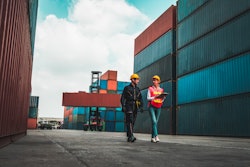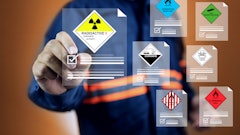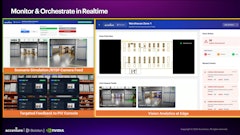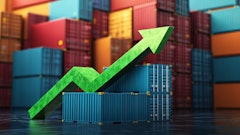
In July 2024 Hurricane Beryl made history as the earliest-forming Category 5 hurricane on record. It's devastating impact on the Caribbean, Yucatán Peninsula and parts of the U.S. Gulf Coast served as a stark reminder of the increasing frequency and severity of extreme weather events. In fact, so far during 2024, the United States has experienced 20 weather-related disasters that caused at least $1 billion in damages (which has now gone up extensively with storms since this article was written), while the World Economic Forum's Global Risks Report 2024 ranked extreme weather as the number one concern among survey participants for the current year.
So, what does all of this have to do with your business? Plenty.
As supply chain professionals, we must face a sobering reality: Disruptions from weather are not just possible, they're inevitable. And when they occur, they can wreak havoc with everything from our tried-and-true transportation routes to the infrastructure, suppliers and customers we rely on every day.
With the busiest part of the Atlantic hurricane season historically occurring in early September, now is the ideal time to revisit your preparation and recovery plans to determine how capable they are of withstanding weather-related disasters. Here are a few practical suggestions to help get you started.
Protecting Your Employees
A sound weather preparedness strategy begins with a people-first approach.
In light of that, consider holding a hurricane/storm preparedness safety training event to get your coastal area employees more storm ready. In addition, take another look at your company’s weather-related business closure policies; do they allow enough time for your personnel to evacuate or prepare to shelter in place as needed? Just as important, be sure your employees know how your company will communicate with them before, during and after a disaster, especially if your usual lines of communication are down.
Checking In with Your Supply Chain Partners
Coordinating with the many organizations that make up your supply chain isn’t easy under the best of circumstances. Now consider what happens when you throw in factors like compromised roadways, power outages, and damaged facilities. While you can’t shield all of your providers or partners from weather-related disruptions, you can help protect your company from the worst supply repercussions by scheduling some candid storm check-ins with these parties ASAP.
During these check-ins, find out which of their operations they consider to be most threatened during hurricanes and other storms – and inquire about the contingency plans they have in place for dealing with those vulnerabilities. Discuss which key partners they’re especially reliant on and what alternate partners, carriers or locations they plan to use if those partners are temporarily out of commission.
It's easy to overlook some of the key inputs and resources that we use every day, but your plans should incorporate them as well. Identify the providers of the critical utilities and commodities your business relies on—power, water, communications, fuel for trucks, etc. Establish direct lines of communication with these suppliers and develop alternative means to obtain these resources if primary sources are compromised. And if you discover that some of the organizations you’re talking with have no plan? Consider sharing your disaster plan with them, or assign some resources at your company to help them develop one. After all, when it comes to disasters, it benefits all of us to work together.
Shoring Up Your Visibility
Just like it’s always a good idea to make sure your phones and other critical electronic devices are charged before a storm, it’s essential to ensure your company is well plugged into highly reliable sources of weather and disaster recovery information – and not just the ones you have to pay for.
A good place to start is the Supply Chain Intelligence Center, a free resource on ALAN’s website that tracks hurricanes (and other disasters) and their potential supply chain impacts – including information about the condition of roadways, airports and more.
Another great resource is Ready.gov, which has some amazing disaster planning tools for storms and other events. During some disasters, FEMA will host calls for the private sector, many of which are tremendously enlightening. You can request an invitation to these calls by sending an e-mail to [email protected]. It’s possible to sign up for access to these options at any time. But considering how hectic things usually get when storms and other disasters hit, you’d be wise to do so while things are calm rather than waiting until things have gotten dire.
Testing All of the Above
It’s often been said that people learn by doing, which is why one of the first preparedness initiatives that ALAN put together was a supply chain disaster simulation game that allows people to “safely” experience a typical disaster.
Obviously, we can’t bring this game to all of you right now (because we’re in the midst of our own busy disaster relief/hurricane season). However it’s highly possible and advisable for you to do something similar at your company. For example, you can simulate the effects of a hurricane on your coastal facilities or the impacts of a severe winter storm on your transportation routes.
During these simulations or disaster drills, you and your most significant stakeholders will get a much better idea of how different kinds of disasters and scenarios might affect various aspects of your operations. In the process, you’ll gain valuable insights into some of the risky practices and vulnerabilities that your company needs to address while there’s still time to correct them.
Preparing To Assist Survivors
One disaster insight you might not be aware of is that the faster a community’s supply chain gets back to “normal” after a disaster like a severe storm, the more quickly that community is usually able to recover and rebuild.
So even if you do nothing else besides employing some of the practices that are detailed above, you’ll be doing a lot to help disaster survivors get on the road to recovery. No matter where a major storm hits or what kind of devastation it creates, there are always many ways the logistics community can be of help. ALAN exists to make it easier for businesses to donate their logistics services or equipment. And time and time again, our experience has shown that when businesses leverage their unique supply chain skills and resources to assist with disasters, the impact can be profound.
Preparing for Tomorrow, Today
Because we’re entering the final months of hurricane season, it’s easy to assume that it’s both too late – and only moderately useful -- to shore up your storm preparation now. In reality, nothing could be further from the truth, because in addition to preparing for the possibility of this year’s dangerous storms, you’ll be paving the way for better response to next year’s -- and the years beyond.
As supply chain professionals, we have a unique role to play in building resilience—not just for our businesses, but for our communities and society as a whole. By embracing this responsibility and working together, we can create supply chains that can weather any storm.



















